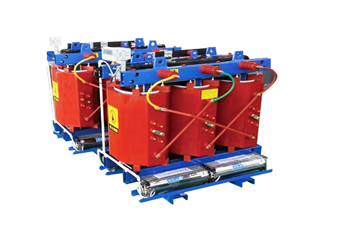- Chinese
-
WeChat


Increase the production and stocking of oil-immersed transformer S11 series and dry-type transformer SCB10 series…
Xuzhou Pengcheng Electric Co Ltd Transformer 2019 Annual Meeting Summary…
Xuzhou Pengcheng Transformer actively fights against the new crown epidemic! Helping the construction of the branch hospital of Beijing Luhe Hospital…
Transformer manufacturers tell you what are the adverse effects of high transformer temperature…
Transformer load test purpose…
Transformer manufacturers demystify - the basic knowledge of dry-type transformers…
Want to know the price trend of 800kva dry type transformer?…
There are so many transformer manufacturers out there, do you know which one to choose?…
What is the structure of an oil-immersed transformer?…
Energy-saving and Environmentally Friendly Dry-type Transformers…
The Structure of Transformer

The transformer consists of components such as coil windings (enamel-coated copper wire), a core (silicon steel sheets), and a flame-retardant frame. In most cases, the transformer also includes an outer casing, which primarily serves the functions of shielding and securing the internal components.
Typically, a transformer has a primary winding and one or more secondary windings, with the coils wound around the core. When alternating current (AC) is supplied to the primary winding, an electromagnetic field is generated, and as a result of electromagnetic induction, a voltage is induced in the secondary windings.
Transformer Principles:
When AC is applied to the primary winding of a transformer, it generates an alternating magnetic field around the secondary winding. The magnetic flux produced by the primary winding is mostly confined within the core (since the magnetic reluctance of the core is much lower than that of air). The secondary winding is also wound around the core, and as it cuts through the magnetic flux, an induced electromotive force (EMF) is generated. This results in a voltage output across the secondary winding. Regardless of the number of secondary windings wound on the core, each will cut through the magnetic flux, generating an induced EMF.
|
上一条:What are the dielectric strength standards for dry-type transformers? 下一条:Factors Affecting the Lifespan of Dry-Type Transformers |
产品推荐

630kva-scb10 Dry Type Transformer
查看更多 +
SCB13 Dry Type Transformer
查看更多 +
SCB10 Dry Type Transformer
查看更多 +
SCB11 Dry Type Transformer
查看更多 +
SCBH15 Dry type Amorphous Alloy Transformer
查看更多 +
SGB10 Non-encapsulated Coils
查看更多 +
S11 Oil Immersed Transformer
查看更多 +
S13 Oil Immersed Transformer
查看更多 +